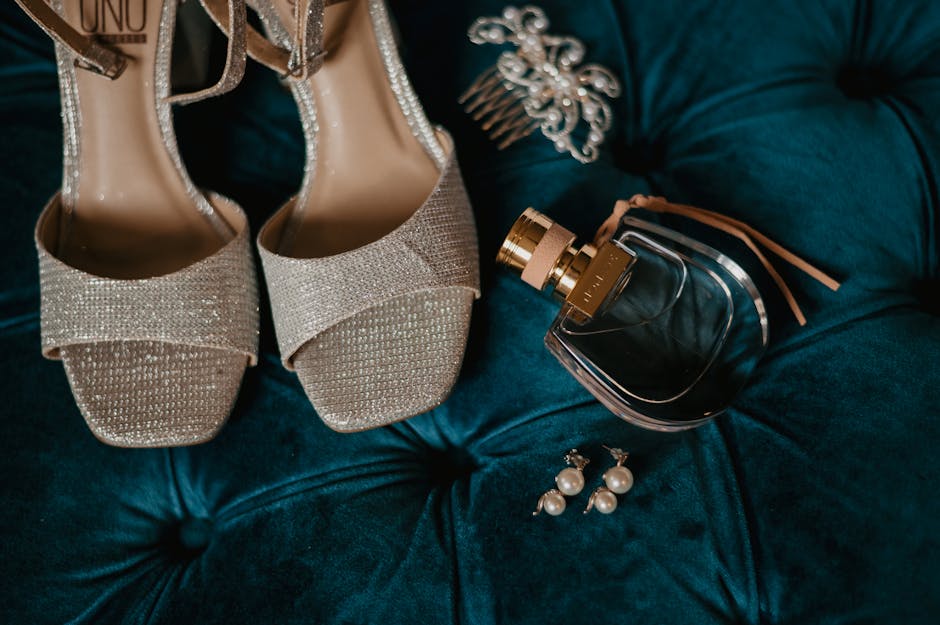Exploring Emerging Trends in Luxury Goods Market
The luxury goods market has always been a fascinating domain characterized by exclusivity, craftsmanship, and premium experiences. Over the years, it has reflected societal shifts, economic fluctuations, and consumer behavior changes. With the advent of new technologies and growing awareness among consumers, the dynamics of this sector are undergoing significant transformation.

From sustainable practices to the integration of digital tools like blockchain for authenticity verification, luxury brands are adapting to align with modern values and preferences. Understanding these emerging trends is not only important for industry insiders but also for consumers looking to make informed decisions about their investments in high-end products.
1. The Rise of Sustainability in Luxury Goods
One of the most notable trends is the emphasis on sustainability within the luxury goods market. With consumers becoming more environmentally conscious, brands are rethinking their production processes. High-end companies like Gucci have introduced carbon-neutral initiatives, while Stella McCartney continues to champion ethical fashion using sustainable materials. According to a report by Bain & Company, nearly 60% of luxury consumers now consider a brand’s sustainability efforts before making a purchase.
- Eco-friendly packaging is becoming standard practice.
- Upcycling and recycling programs are being implemented by numerous brands.
- Transparency regarding sourcing and manufacturing is gaining traction among high-end companies.
2. Digital Innovation Transforming Luxury Experiences
The integration of digital tools has revolutionized how luxury brands interact with their customers. Augmented reality (AR) try-ons and virtual stores have become commonplace, allowing customers to engage with products remotely. Blockchain technology is also increasingly used to verify the authenticity of items like watches and handbags, ensuring consumer trust.
Additionally, social media platforms play a significant role in shaping purchasing decisions. Influencer collaborations and live shopping events have become critical marketing strategies for premium brands such as Dior and Louis Vuitton. The digital transformation has not only expanded the reach of luxury brands but also created personalized shopping experiences that cater to individual consumer preferences.
3. The Growth of Second-Hand Luxury Markets
The second-hand luxury market is experiencing unprecedented growth, driven by a combination of environmental concerns and financial practicality. Platforms like The RealReal and Vestiaire Collective have normalized buying pre-owned luxury items without compromising on quality or authenticity.
- Second-hand goods are often more affordable, making them accessible to younger demographics.
- Vintage pieces add an element of uniqueness that new items may lack.
- The resale value of high-quality luxury items remains strong, making them a viable investment option.
4. Personalization as a Driving Force
Modern consumers demand more than just a product, they seek unique experiences tailored specifically to their tastes. Luxury brands are responding by offering highly personalized services such as bespoke tailoring, customized accessories, and exclusive access to events or collections. This shift reflects a deeper connection between consumers and the brands they choose to support.
An example of this trend can be seen in how high-end jewelry companies like Cartier allow clients to co-design engagement rings, while car manufacturers like Rolls-Royce offer endless customization options for their vehicles. Personalization not only enhances customer satisfaction but also strengthens brand loyalty over time.
5. Cultural Relevance and Inclusivity
Cultural sensitivity and inclusivity have become vital components for luxury brands aiming to resonate with diverse audiences globally. The inclusion of models from various backgrounds in advertising campaigns and the celebration of cultural heritage through designs demonstrate this shift. For instance, Burberry's recent collections have incorporated elements inspired by African artistry as part of their strategy to appeal to wider audiences while respecting cultural traditions.
The effort to remain culturally relevant has also extended into gender-neutral offerings in clothing and accessories, a move that challenges traditional norms while catering to evolving consumer identities.
The luxury goods market is continually adapting to reflect changing consumer expectations and global influences. Trends such as sustainability, digital innovation, second-hand markets, personalization, and cultural inclusivity highlight how this sector remains both dynamic and resilient. By staying attuned to these shifts, individuals can better understand what defines modern luxury while making informed choices that align with their values and aspirations.
The Role of Technology in Enhancing Supply Chain Transparency
As the luxury goods market continues to evolve, one area gaining increased attention is the role of technology in improving supply chain transparency. Modern consumers are not only interested in the final product but also in understanding how it was made, where it came from, and the ethical practices behind its creation. This demand for greater accountability has driven luxury brands to leverage innovative technologies to build trust and demonstrate their commitment to ethical production practices.
One of the key technologies facilitating supply chain transparency is blockchain. By integrating blockchain systems into their operations, luxury brands can provide customers with immutable digital records that trace every stage of a product's journey, from sourcing raw materials to manufacturing and distribution. For example, brands like LVMH have implemented blockchain solutions such as the Aura Blockchain Consortium to guarantee the authenticity and ethical origins of their products.
Furthermore, radio-frequency identification (RFID) tags and Internet of Things (IoT) devices are being used to track inventory movement in real-time. These tools not only improve operational efficiency but also allow customers to verify claims regarding sustainability, fair labor practices, and material sourcing. A consumer purchasing a leather handbag, for instance, could access detailed information about where the leather was sourced and whether it meets ethical standards.
This increased transparency benefits both consumers and brands. For consumers, it fosters informed purchasing decisions that align with personal values such as sustainability and ethical consumption. For brands, it creates a competitive advantage by building stronger relationships with socially conscious buyers while mitigating risks associated with reputational damage due to supply chain controversies.
As technology continues to advance, the potential for even greater visibility into luxury goods production processes will grow. Brands that embrace these innovations will not only enhance consumer trust but also contribute meaningfully to creating a more sustainable and ethically sound industry.
